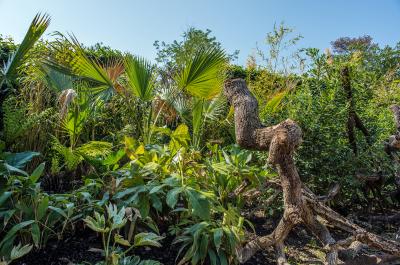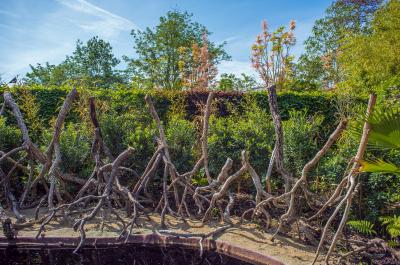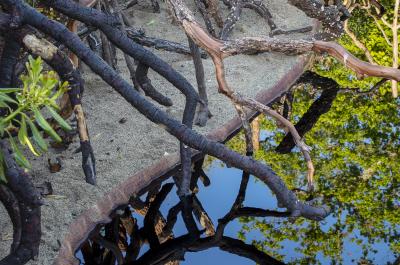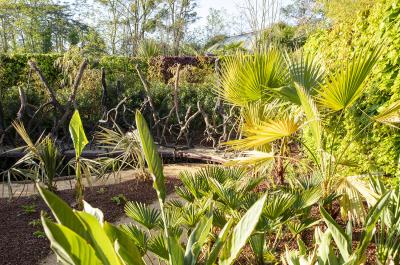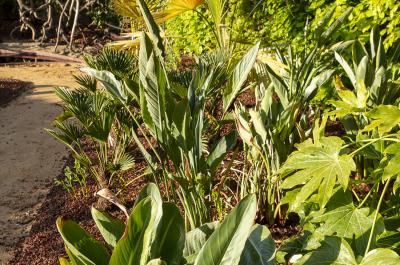18. Le jardin des mangroves
The garden of mangroves
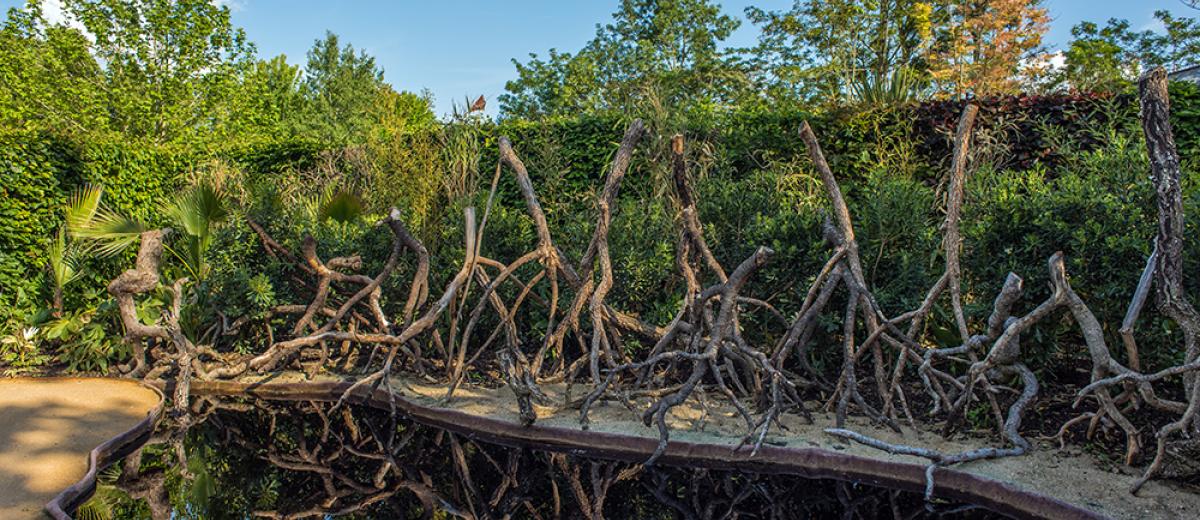
A mangrove is a vibrant ecosystem that develops in the intertidal zones - the foreshore - of low coastlines in tropical and subtropical regions of the world. They are largely made up of mangroves, small trees or shrubs whose stilt roots and pneumatophores (aerial roots) fix them to the ground and breathe with the environment. The stilt roots form a barrier to protect from the waves, trap the alluvium from the water and therefore contribute to preventing the erosion of the coastlines and extreme climate phenomena such as strong winds, hurricanes and tsunamis. This is therefore a natural approach to abating the risks of natural catastrophes, as well as acting as a superb carbon sink in the fight against global warming.
But besides this protective role, the mangrove is also a key source of food and livelihood for fishermen and local communities as it is home to dozens of species of fish, birds, animals and plants. The ecosystem produces the wood used for charcoal and building houses, and boasts numerous plants which supply local pharmacopoeia and crafts.
The mangrove makes a key contribution to reducing the risk of catastrophes and adapting to evolutions in our climate.
This garden celebrates the key role of mangroves in the protection of coastlines and of the environment.

